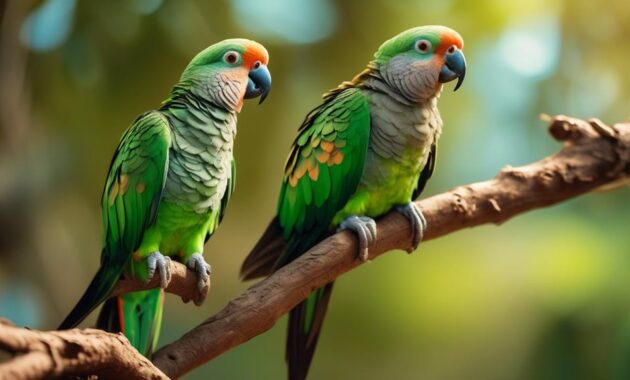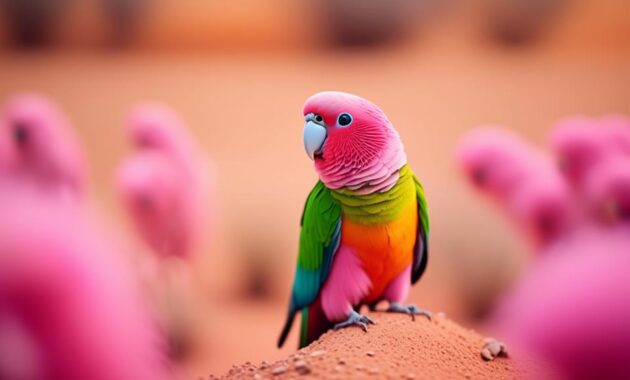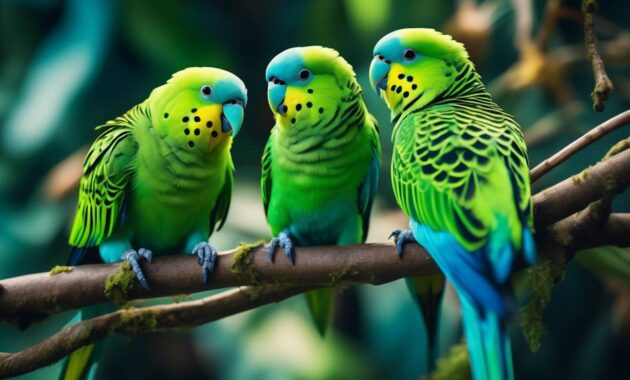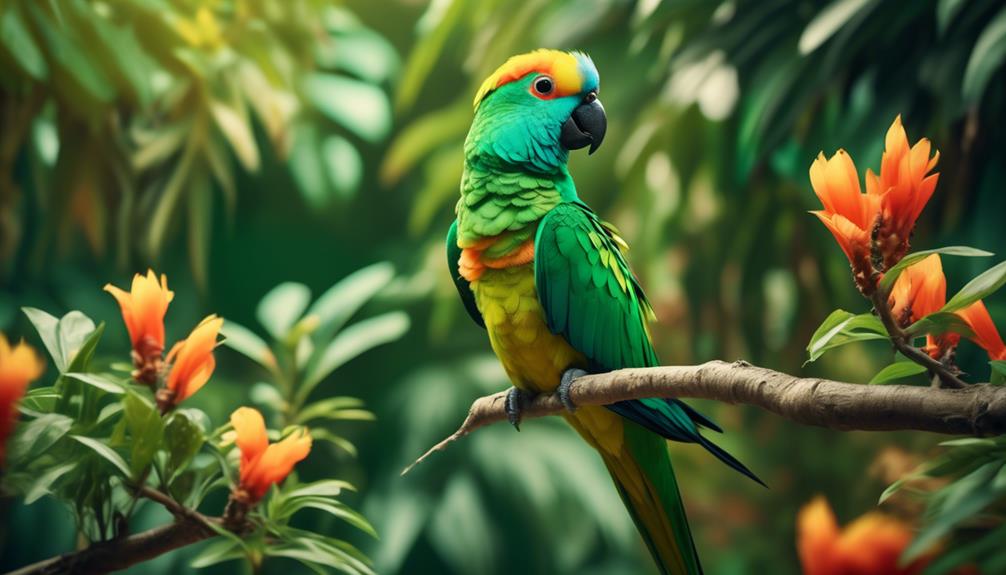
Are you ready to discover a bird that will captivate your senses with its vibrant colors and charming personality?
Imagine a parrot with a turquoise blue plumage, bright yellow wings, and a distinctive black hood on its head. This is the Hooded Parrot, a stunning species that will leave you in awe.
But there’s more to these parrots than just their stunning appearance. Stay tuned as we uncover the unique characteristics and fascinating behaviors of the Hooded Parrot, and why it is a bird that you won’t want to miss.
Key Takeaways
- Hooded Parrots are medium-sized birds, approximately 10 inches in length, and require a spacious cage to thrive.
- They have a lifespan of 15-25 years and are known for their sturdy nature and good health with proper care.
- Hooded Parrots belong to the Parrot family and are part of the Psephotellus family of Grass parakeets, displaying extreme dimorphism.
- They have vibrant colors, with males being mostly turquoise blue with bright yellow wings and a black hood, while females have an olive green body with lighter tones and a brown patch on the forehead.
Size and Lifespan of Hooded Parrots
Hooded Parrots are small-sized birds, measuring approximately 10 inches in length and weighing around 2 ounces. Their tail makes up more than half of their overall length.
To ensure their well-being, it’s important to provide them with a spacious cage. Cramped conditions can be detrimental to their health and behavior.
These parrots have a lifespan of 15-25 years and are known for their sturdy nature and good health. With proper care, they can live up to 25 years.
While they can be bred in aviary settings, it’s recommended to keep them as regular, cage parrots. This helps minimize risks during breeding time.
Bird Species and Conservation Status
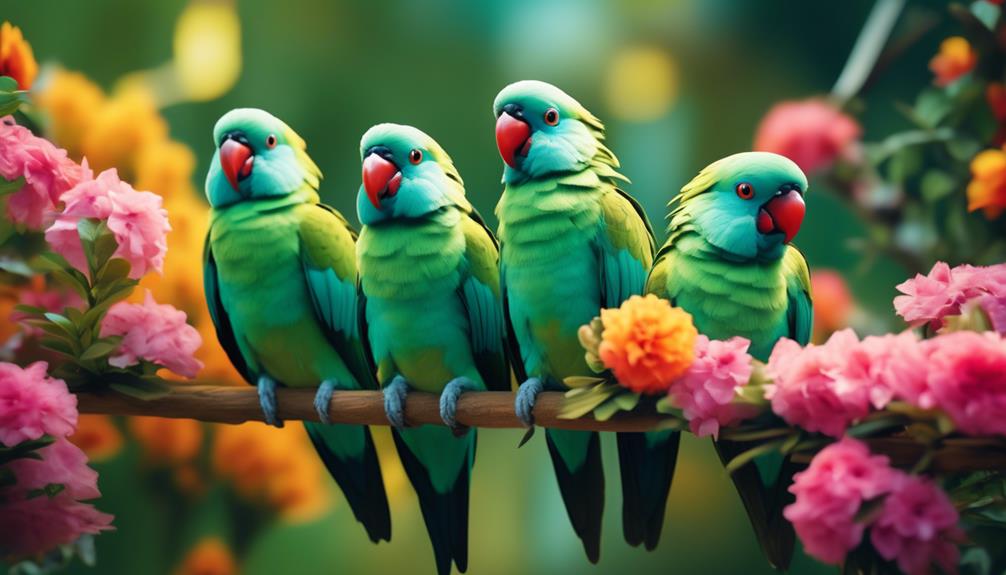
Belonging to the Parrot family, the Hooded Parrots are part of the Psephotellus family of Grass parakeets. These charming birds display extreme dimorphism, with distinct differences between males and females.
While they aren’t currently endangered, Hooded Parrots face threats from wildfires, overgrazing, and habitat loss. It’s crucial to protect their natural habitats to ensure their continued survival. By preserving their environments, we can help maintain the population stability of these vibrant and beautiful parrots.
Conservation efforts should focus on preventing wildfires, implementing sustainable grazing practices, and protecting their habitats from further destruction. With these measures in place, we can ensure that future generations will have the opportunity to enjoy the vibrant presence of the Hooded Parrot.
Vibrant Colors and Appearance
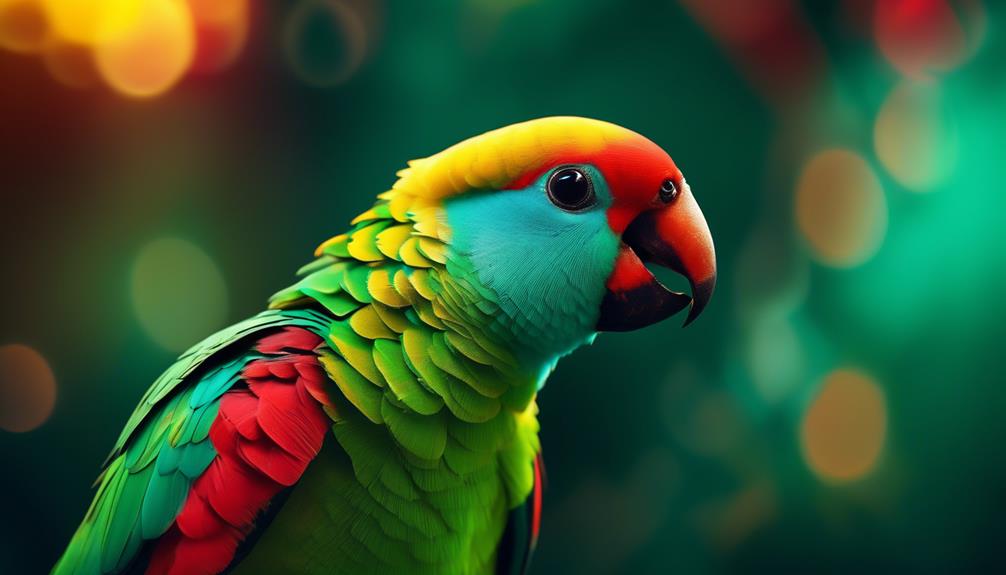
With their vibrant colors and striking appearance, Hooded Parrots captivate the eyes of bird enthusiasts. These parrots showcase a stunning array of hues that make them stand out amongst other bird species.
Males are predominantly turquoise blue, with bright yellow wings and a black hood on the top half of their head. In contrast, females have an olive green body with lighter tones on the chest and a brown patch on the forehead. The color differences between males and females are quite distinct.
Additionally, there’s a unique yellow artificial color mutation found in this breed. The combination of these vibrant colors makes the Hooded Parrot a truly captivating and charming sight to behold.
Sounds and Vocalization
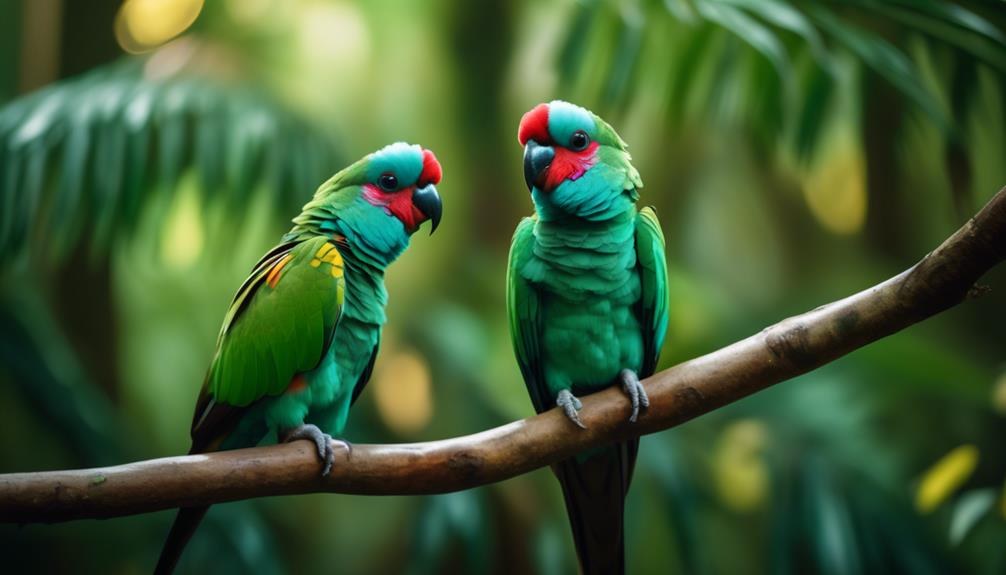
When it comes to their sounds and vocalization, Hooded Parrots are known for their melodic chirps and occasional shrill calls. Here are some key points about their sounds and vocalization:
- Hooded Parrots aren’t overly noisy, making them suitable pets for both apartments and household settings.
- They become more vocal in aviaries due to territorial behavior around other parrot species.
- Their natural calls are a combination of tweets and melodic chirps.
- Occasionally, they can emit shrill calls.
Providing enough room and a spacious cage is essential to prevent health and behavioral problems. Cramped conditions can be detrimental to their well-being.
Suitable Living Environments
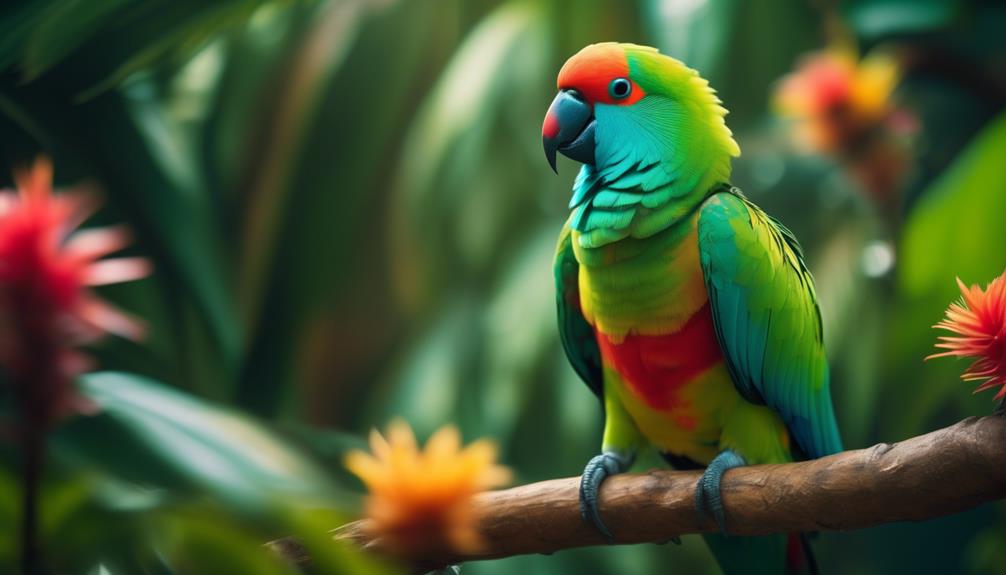
To ensure the well-being of Hooded Parrots, it’s important to provide them with suitable living environments. These parrots require spacious cages to prevent health and behavioral problems. Cramped conditions can be detrimental to their overall well-being.
While aviary settings may seem appealing, they can pose risks during breeding time. It’s recommended to keep Hooded Parrots as regular cage parrots to ensure their safety and comfort.
With their sturdy nature and good health, these parrots can live up to 25 years with proper care. So, whether you have an apartment or a household setting, as long as you provide enough room, Hooded Parrots can be suitable pets.
Dietary Needs and Nutrition
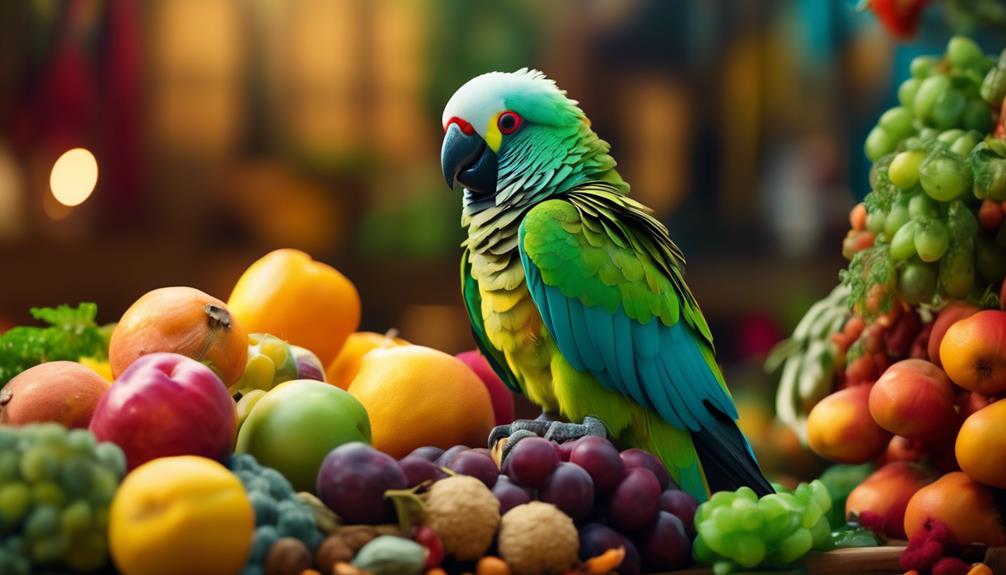
To ensure the overall health and well-being of Hooded Parrots, it’s crucial to meet their specific dietary needs and provide proper nutrition. Here are three important factors to consider:
- Variety of Fresh Foods:
- Offer a wide range of fresh fruits and vegetables, such as apples, carrots, and leafy greens.
- Include a mix of high-quality pellets and seeds in their diet.
- Avoid feeding them avocado, chocolate, caffeine, and alcohol, as they’re toxic to parrots.
- Adequate Protein Intake:
- Provide a source of protein, such as cooked eggs or lean meats, to meet their nutritional requirements.
- Supplement their diet with small amounts of nuts and legumes for added protein.
- Hydration:
- Ensure they have access to clean, fresh water at all times.
- Mist their feathers occasionally to help them maintain proper hydration levels.
Social Behavior and Interaction
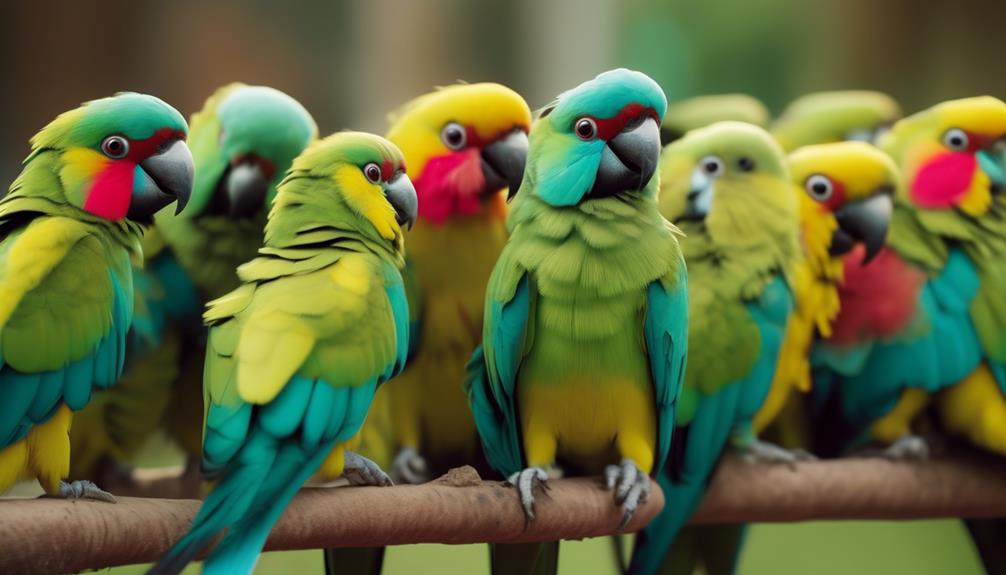
Hooded Parrots are highly sociable birds that thrive on social interaction with their human caregivers and other parrots. They’re known for their friendly and outgoing nature, making them wonderful companions. These birds enjoy spending time with their owners and require daily interaction to maintain their mental and emotional well-being.
They love to engage in playtime, such as solving puzzles, exploring toys, and learning new tricks. Hooded Parrots also enjoy the company of other parrots and can form strong bonds with them. It’s important to provide them with opportunities for socialization, either through supervised playdates or by keeping them in pairs or small groups.
Training and Enrichment Tips
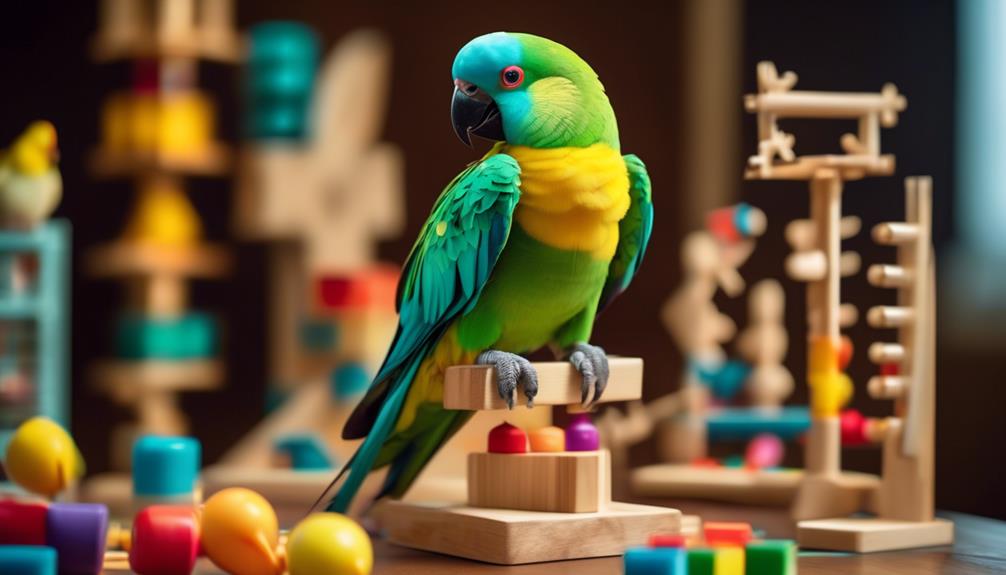
For optimal results, incorporate positive reinforcement techniques when training and enriching your Hooded Parrot. Here are some tips to help you along the way:
- Use treats: Reward your parrot with its favorite treats whenever it displays desired behaviors, such as stepping onto your hand or mimicking a certain sound.
- Provide mental stimulation: Engage your parrot’s mind by offering puzzle toys or hiding treats for it to find. This will prevent boredom and encourage natural foraging behaviors.
- Offer social interaction: Spend quality time with your parrot, engaging in activities such as talking, playing, and training. This will strengthen your bond and keep your parrot mentally and emotionally stimulated.
Common Health Issues and Care
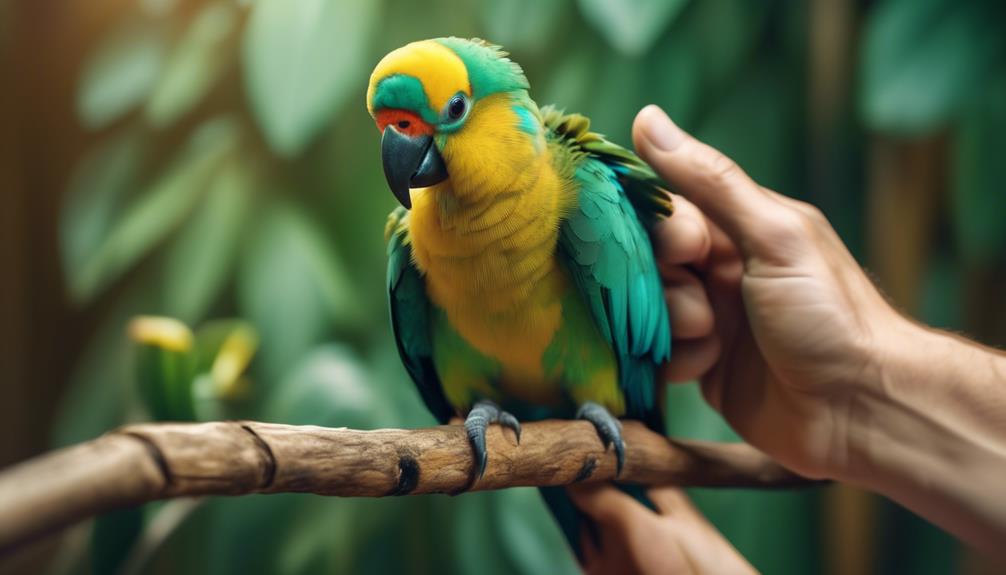
As you continue to care for your Hooded Parrot, it’s important to be aware of common health issues and provide proper care to ensure their well-being. Here are some key health issues to watch out for and tips on how to care for your parrot:
| Common Health Issues | Care Tips |
|---|---|
| Feather plucking or self-mutilation | Ensure your parrot has a stimulating environment with plenty of toys and activities. Regular vet check-ups can help identify any underlying medical causes. |
| Respiratory problems | Keep the cage clean and well-ventilated. Avoid exposing your parrot to smoke, fumes, or other irritants. |
| Nutritional deficiencies | Provide a balanced diet consisting of fresh fruits, vegetables, seeds, and pellets. Consult with a vet to ensure your parrot’s specific nutritional needs are met. |
| Psittacosis (parrot fever) | Practice good hygiene and cleanliness. Wash your hands before and after handling your parrot. Regularly clean their cage and accessories. |
| Bacterial and fungal infections | Maintain a clean environment and provide proper nutrition. Monitor your parrot for any signs of illness and seek veterinary care if necessary. |
Where to Find Hooded Parrots for Adoption
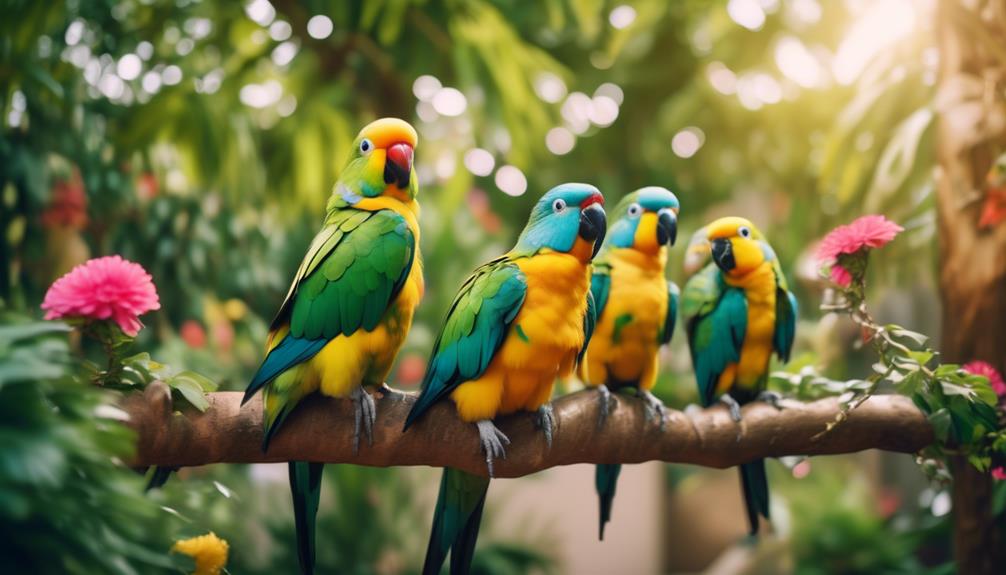
If you’re interested in adopting a Hooded Parrot, there are several places where you can find them. Here are some options to consider:
- Local Animal Shelters:
- Check with your local animal shelters or rescue organizations. They may have Hooded Parrots available for adoption.
- Visit their websites or call them to inquire about the availability of these parrots.
- Avian Rescue Centers:
- Avian rescue centers specialize in rescuing and rehoming birds, including Hooded Parrots. They often have a variety of parrots available for adoption.
- Research and locate avian rescue centers in your area. Contact them to inquire about Hooded Parrots for adoption.
- Online Adoption Platforms:
- Online adoption platforms, such as pet adoption websites or forums, can be a convenient way to find Hooded Parrots available for adoption.
- Search through these platforms and filter your search for Hooded Parrots. Contact the owners or organizations for more information.
Remember to thoroughly research and understand the specific needs and requirements of a Hooded Parrot before adopting one. Ensure you can provide the necessary care and attention that these vibrant and charming birds need.
Frequently Asked Questions
How Can I Determine the Gender of a Hooded Parrot?
To determine the gender of a hooded parrot, observe their appearance. Males have turquoise blue bodies, yellow wings, and a black hood, while females have an olive green body with lighter tones.
Are Hooded Parrots Known for Their Ability to Talk and Mimic Human Speech?
No, hooded parrots are not known for their ability to talk and mimic human speech. While they can make some vocalizations, they are not as proficient as other parrot species in imitating human speech.
What Types of Enrichment Activities Are Recommended for Hooded Parrots?
To keep your hooded parrot engaged and happy, provide enrichment activities like puzzle toys, foraging opportunities, and interactive playtime. These activities stimulate their intelligent minds and prevent boredom, promoting their overall well-being.
Can Hooded Parrots Be Kept With Other Bird Species in a Mixed Aviary Setting?
Yes, hooded parrots can be kept with other bird species in a mixed aviary setting. However, it’s important to note that during breeding time, aviary settings can pose risks.
What Are Some Common Health Issues That Hooded Parrots May Experience and How Can They Be Prevented or Treated?
Common health issues that hooded parrots may experience include respiratory infections, feather plucking, and beak and feather disease. To prevent these, provide a clean environment, a balanced diet, regular vet check-ups, and mental stimulation.
How Does the Scarlet Chested Parrot Compare to the Hooded Parrot in Terms of Vibrancy and Charm?
The enchanting scarlet chested parrot is known for its stunning vibrancy, boasting a striking combination of red, green, and blue feathers. In comparison, the hooded parrot also possesses charm with its vibrant green and yellow plumage, but it doesn’t quite match the eye-catching allure of the scarlet chested parrot.
Conclusion
In conclusion, the Hooded Parrot is an incredibly captivating and vibrant bird species. With their stunning colors and unique characteristics, they’re a delight to any bird lover. These parrots have a sturdy nature and good health, allowing them to be long-term companions.
However, it’s important to provide them with a spacious living environment and proper care to ensure their well-being. Consider adopting a Hooded Parrot and experience the joy they bring to your life.


